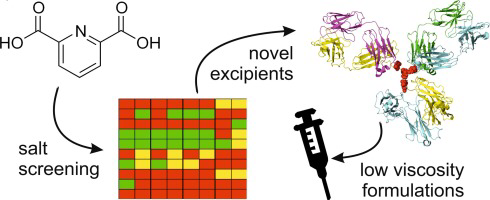- Home
- Blog
- News
- Basics
- Sources
- Agencies, Regulatory & Organisations
- CERSI Excipients Browser
- Excipient Report
- Excipient DMF List
- EXCiPACT Certified Companies
- Excipient Documentation
- Excipient EINECS Numbers
- Excipient E-Numbers
- FDA Inactive Ingredient List
- FDA GRAS Substances (SCOGS) Database
- IPEC Americas
- USP - U.S. Pharmacopeia
- Definitions
- Whitepapers / Publications
- Supplier
- Services
- Media
- Events
- 1st pharmaexcipients Poster Award
- Event Calendar
- Events featured by pharma-excipients
- 4th Annual Formulation & Drug Delivery Congress
- DDF Summit
- ExcipientFest Americas
- ExcipientFest Asia
- Global CompliancePanel
- International Conference and Exhibition on Pharmaceutics & Novel Drug Delivery Systems
- Formulation & Drug Delivery USA Congress
- Laboratory Medicine 2018
- Making Pharmaceuticals Europe
- Making Pharmaceuticals Exhibition
- Pharma Integrates
- PharmaExcipients China @CPhI China
- TTC Technology Training Center
- Jobs
- Online Sourcing
- Contact
25. July 2018
Concentrated monoclonal antibody (mAb) solutions can lead to high viscosity as a result of protein-protein interactions and pose challenges for manufacture. Dipicolinic acid (DPA, pyridine-2,6-dicarboxylic acid) is a potential excipient for reduction of protein solution viscosity and here we describe new DPA salts with improved aqueous solubility. Crystallinity and solubility screens identified ethanolamine and diethanolamine as two promising counterions which generated crystalline, high...
04. April 2017
Abstract Ibuprofen is an oral analgesic usually processed by wet granulation. In this manuscript a new roller compaction process for ibuprofen is reported. The low melting point of ibuprofen is a critical point to be considered during processing. Melting of ibuprofen and its posterior solidification leads to a lower soluble form. The hypothesis of this work is that crystallinity of ibuprofen may be a good indicator of the quality for both raw material selection and the granules obtained during...
03. March 2017
Abstract A 23 Factorial design of cissus-gelatin B polymer blends was developed to formulate amodiaquine HCl-artesunate (AQ-AS) microparticles by varying the polymer blend concentration (2 %w/v, 5 %w/v), crosslinking time (0.5 h, 1 h) and glutaraldehye volume (0.5 ml, 1 ml). The formulations were evaluated using drug entrapment efficiency (EE), particle size, polydispersity index, thermal behaviour with differential scanning calorimetry, crystallinity with powder X-ray diffraction, morphology...
15. February 2017
Diclofenac potassium is an anti-inflammatory agent classified as a class II drug as per the biopharmaceutical classification system (BCS). The poor dissolution rate of water-insoluble drugs is still a major problem confronting the pharmaceutical industry. There are several techniques to enhance the dissolution of poorly soluble drugs. Methods available include salt formation, micronization and addition of solvent or surface active agents. The objective of the present work is to improve the...
14. September 2016
Abstract This work investigates whether the solubility of poorly soluble compounds can be improved by using mesoporous magnesium carbonate (MMC) as the drug delivery system. A solvent evaporation method was used to load structurally diverse model drugs (celecoxib, cinnarizine and griseofulvin) into the pores of MMC. The drug-loaded carrier system was then characterized in terms of porosity, crystallinity, and release profiles by a variety of experimental techniques, including X-ray diffraction,...
21. March 2016
Abstract. The crystal structures of active pharmaceutical ingredients and excipients should be strictly controlled because they influence pharmaceutical properties of products which cause the change in the quality or the bioavailability of the products. In this study, we investigated the effects of microcrystalline cellulose (MCC) crystallinity on the hydrophilic properties of tablets and the hydrolysis of active pharmaceutical ingredient, acetylsalicylic acid (ASA), inside tablets by using...
13. November 2015
31. July 2015
The effects of PURE-DENT® and SPRESS® starch properties on their compression behavior was characterized using “SM2” approach (structural properties, macroscopic properties, and multivariate analysis). Moisture sorption rate constants, moisture content, amylose and amylopectin degradation enthalpy, percent crystallinity, amylose–amylopectin ratio, and cross-linking degree were used to profile starch structural properties. More

